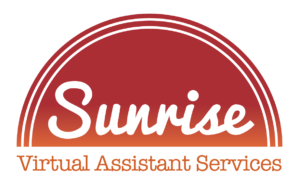Launching a new startup is exhilarating but fraught with challenges, making the right startup success strategies crucial. This article dives into three powerful frameworks that can revolutionize your business strategy and drive growth and innovation.
Whether you’re just starting or refining your approach, these proven methods—the Lean Startup Framework, Product-Market Fit, and Market Opportunity Navigator—can offer unique advantages for your startup.
Lean Startup Framework
Overview of the Lean Startup Methodology
The Lean Startup methodology takes a scientific approach to creating and managing startups. It’s a great idea popularized by Eric Ries, but the framework helps founders launch their products and businesses in a way that’s efficient, cost-effective, and minimally risky.
Key Principles
Build-Measure-Learn
The Build-Measure-Learn cycle is the core of the Lean Startup methodology. Startups should build what’s called a Minimum Viable Product (MVP), measure its performance, and learn from the results. This iterative process allows startups and small businesses to make quick adjustments based on real-world feedback.
What’s a Minimum Viable Product (MVP)?
An MVP is a base-model product version with the least amount of features, targeted at new customers. It helps test hypotheses and understand customer needs without the need for a fully developed product. Using an MVP can give a competitive advantage with the right niche market!
Pivot
A pivot involves fundamentally changing the direction of the business based on new ideas, feedback, and validated learning. It’s a strategy to ensure that startups don’t waste resources or marketing efforts on ideas that aren’t working.
Practical Applications and Case Studies
One example of the Lean Startup Framework in action is Dropbox. Instead of building a complete product, the founders strategic planning included creating a simple demo video that explained the service. This MVP helped gauge interest and gather critical feedback, ultimately guiding their development process.
Common Mistakes to Avoid
- Overbuilding the MVP
- Ignoring customer feedback
- Delaying the pivot
- Focusing solely on metrics without seeking qualitative user feedback
Product-Market Fit
Definition and Importance of Product-Market Fit
Product-market fit is the degree to which a product satisfies strong market demand. Marc Andreessen, who coined the term, believes it’s crucial for a successful startup. Without product-market fit, all other efforts for any startup businesses are futile.
Methods for Measuring Product-Market Fit
Several metrics can gauge product-market fit:
- Net Promoter Score (NPS): A market research metric used to measure customer satisfaction and loyalty.
- Churn Rate: Indicates how many customers stop using the product.
- Customer Feedback: Direct feedback from users can provide invaluable insights.
Strategies for Achieving and Sustaining Product-Market Fit
- Customer Development: Engage directly with prospective customers to understand their needs.
- Iterative Development: Use iterative cycles to continuously improve the product.
- User Testing: Conduct regular user experience tests to validate features and usability.
Real-World Examples of Successful Product-Market Fit
Slack initially started as an application within a gaming company, but when its internal communication tool became popular, it pivoted to focus on it. This shift led to achieving product-market fit, turning Slack into one of the leading collaboration tools worldwide.
Market Opportunity Navigator
Understanding Market Opportunities
The Market Opportunity Navigator helps startups identify and prioritize market opportunities. This framework, developed by Marc Gruber and Sharon Tal, aligns a startup’s capabilities with market needs.
The Two Dimensions of the Market Opportunity Navigator
- Markets: Different customer segments or applications where the new product can be sold.
- Technologies: The different technological solutions that can solve a market’s problem.
How to Navigate and Identify the Most Promising Market Opportunities
- Assess Market Attractiveness: Evaluate market size, growth rate, and competition factors.
- Evaluate Fit: Determine how well your startup’s capabilities match the market needs.
- Strategic Roadmapping: Create a roadmap to explore and test different market opportunities.
Tools and Techniques for Using the Market Opportunity Navigator Framework
- SWOT Analysis: First step; use this framework to assess strengths, weaknesses, opportunities, and threats.
- Porter’s Five Forces: Analyze the competitive environment.
- Customer Interviews: Gather qualitative data directly from potential customers.
Case Studies
Cirque du Soleil successfully used the Market Opportunity Navigator to pivot from traditional circus performances to a unique blend of theater, acrobatics, and live music. This strategic shift and positive change opened up new market opportunities and set them apart from conventional circuses.
Additional Startup Success Strategies
Expanding beyond the foundational frameworks, startups can benefit immensely from leveraging strategic partnerships and effective networking. Establishing strong connections with industry experts, potential clients, and other entrepreneurs can provide valuable insights, resources, and opportunities. Startups gain access to new markets, technologies, and funding sources through collaborations and alliances.
Moreover, participating in incubators and accelerators can offer mentorship, education, and networking, significantly enhancing a startup’s chances of success. By actively seeking and nurturing these relationships, startups can create a robust support system that facilitates sustainable growth and innovation.
Talk about a positive impact for the long run!
Conclusion
Your startup journey doesn’t have to be completely fraught with common challenges! With careful planning, and a few key strategies, successful entrepreneurs can create successful businesses. In the world of startups, hard work always equals long-term success (and strategy is everything!).
Each startup framework above offers actionable insights and practical tools to help your startup succeed.
You can create efficient, cost-effective strategies that adapt to market demands by leveraging the Lean Startup Framework. Achieving Product-Market Fit ensures your product resonates with your ideal target audience, driving customer satisfaction and loyalty. Lastly, the Market Opportunity Navigator provides a structured approach to identifying and capitalizing on lucrative market opportunities.
The hardest part is getting started; hopefully, these startup success strategies will help steer you in the right direction towards ultimate business growth!


